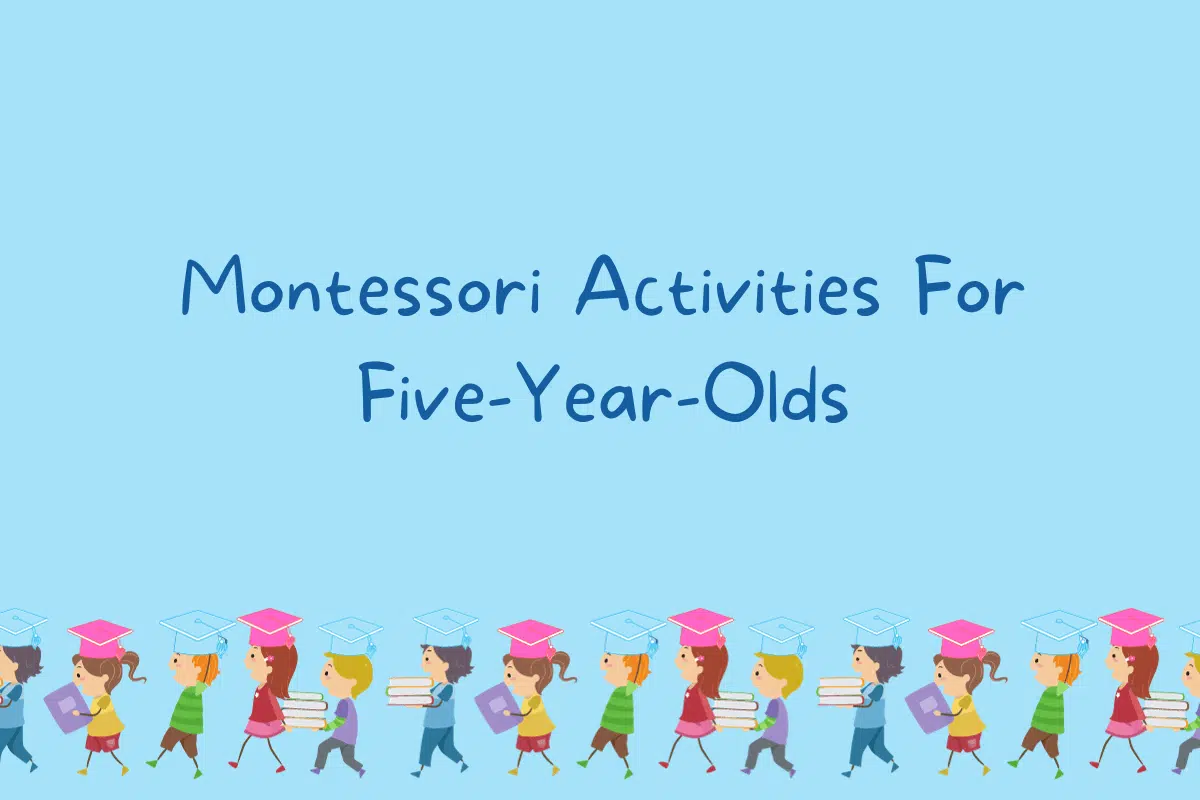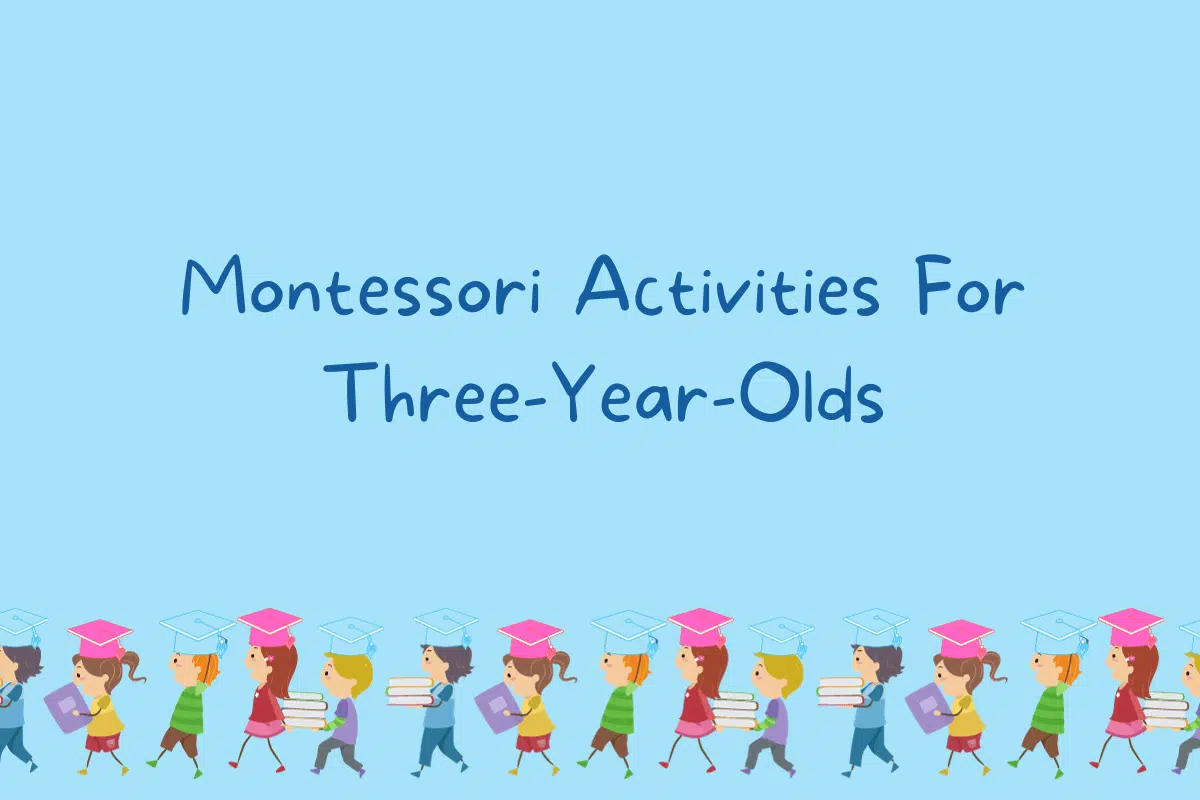Choosing the right educational approach for your child can be a daunting task with numerous options available. Two such prominent approaches are the Montessori and Forest School methodologies.
Each has its unique philosophy, teaching strategies, and benefits. This article will provide an in-depth comparison between the Montessori and Forest School education systems to help you make an informed decision.
We’ll delve into their philosophies, methodologies, advantages, and potential drawbacks.
Whether you’re a parent seeking the best for your child or an educator exploring different teaching strategies, this comprehensive guide will offer valuable insights into these two distinct educational approaches. Let’s dive in!
Related: For more, check out our article on How Montessori Teaches Reading here.

Understanding Montessori Education
Italian physician and educator Maria Montessori developed Montessori education in the early 20th century. It’s rooted in the belief that children are naturally curious and eager to learn.
The philosophy of Montessori education revolves around the idea of children being active participants in their learning process.
This system encourages children to be independent, take initiative, and develop their abilities at their own pace. It focuses on the child’s cognitive, emotional, physical, and social development.
Key principles of Montessori education include:
- Child-Centered Learning: Each classroom is designed to meet the needs, interests, abilities, and development phase of the children in it.
- Hands-On Learning: Montessori education heavily emphasizes learning through all five senses, not just listening, watching, or reading.
- Self-Directed Activity: Children can choose their activities from within a prescribed range of options, fostering a sense of independence.
- Uninterrupted Work Periods: This allows children to work at their own pace, uninterrupted, to help them focus and deeply engage in an activity.
There are several advantages to Montessori education. It fosters independence, promotes a love for learning, encourages creativity, and respects individual learning paces and styles.
It also instils practical life skills and nurtures community and global awareness.
However, like any educational approach, Montessori isn’t without its criticisms. Some parents feel that the Montessori method lacks structure, which may not suit every child, particularly those who thrive on routine.
Others believe it doesn’t emphasise group work and collaborative learning enough. The cost can also be a barrier for some families, as Montessori schools can be more expensive than traditional public schools.
Understanding Forest School Education
Forest School originated in Denmark in the 1950s to provide preschool children with an education outside in the natural environment. It was introduced to the UK in the 1990s and has gained popularity worldwide.
The philosophy of Forest School education is based on the belief that children benefit immensely from learning experiences in a woodland or natural environment.
It promotes holistic development, fosters resilience, confidence, self-esteem, and independence, and encourages children’s curiosity and exploration.
Core principles of Forest School education include:
- Regular Interaction with Nature: Children are exposed to nature regularly in a woodland or natural environment, promoting an appreciation for the outdoors.
- Child-led Learning: Activities are driven by the interests and ideas of the children, encouraging creativity and problem-solving skills.
- Risk-Taking: Children are encouraged to take controlled risks – like climbing trees or using tools – to foster resilience and independence.
The benefits of Forest School education are numerous. It fosters a strong connection with nature, improves physical fitness, promotes mental well-being, and develops social and teamwork skills.
Moreover, it enhances practical skills, problem-solving abilities, and risk assessment.
Despite its numerous benefits, Forest School education does have potential drawbacks.
Critics contend that it may lack the academic rigour for older students and may not offer enough structure for those who excel in traditional, guided learning settings.
Furthermore, the frequency of outdoor sessions can be influenced by weather conditions, and urban areas may present challenges in finding suitable outdoor spaces.
Comparison Between Montessori and Forest School
Montessori and Forest School education share similarities in their teaching and learning approaches.
They both value child-led learning, where the child’s interests and curiosity guide the educational experience.
Both methods also prioritize hands-on, experiential learning and foster a strong sense of independence in students.
However, there are differences between the two methods.
- Teaching Methods: While both approaches promote self-directed learning, Montessori provides a more structured environment with specific materials designed for learning, whereas Forest School is more open-ended and relies heavily on nature as the primary teaching tool.
- Environment: Montessori classrooms are carefully prepared indoor environments filled with specific educational materials. In contrast, Forest Schools take place entirely outdoors, typically in woodland or other natural settings.
- Student Engagement: In Montessori schools, children often work independently or in small groups on tasks they’ve chosen themselves, while Forest Schools tend to emphasize more collaborative, group-based activities.
- Curriculum: Montessori schools have a defined curriculum that covers practical life skills, sensory activities, language, math, culture, and science. On the other hand, Forest Schools don’t follow a set curriculum. Instead, learning emerges organically from children’s interactions with the natural environment.
For example, a study by Dr. Sue Waite at Plymouth University found that Forest School students showed significant improvements in physical fitness and motor skills compared to their peers in traditional settings.
The study also noted enhanced social and communication skills, increased motivation and concentration, and better knowledge and understanding of the environment.
On the other hand, research has shown that Montessori students often outperform their non-Montessori counterparts in areas like academic achievement, social understanding, and mastery orientation, and they also demonstrate more mature, skilful, and creative play.
It’s important to note that while these teaching methodologies are different, both aim to create a nurturing and engaging learning environment that fosters a love for lifelong learning.
The choice between the two would depend mainly on a child’s needs, temperament, and learning style.
Choosing Between Montessori and Forest School
Choosing between Montessori and Forest School education can be challenging for parents and educators. Here are some factors to consider:
- Child’s Learning Style: Some children may thrive in the structure and order of a Montessori classroom, while others may benefit from the freedom and exploration offered by Forest School. Consider your child’s personality, interests, and learning style.
- Access and Affordability: Location and cost are practical considerations. Montessori schools can sometimes be more expensive, and Forest Schools require access to suitable outdoor spaces.
- Educational Goals: Think about your long-term educational goals for your child. Montessori might be a better fit if you emphasise academic achievement. A Forest School could be more suitable if you value resilience, self-confidence, and a love for nature.
Observe your child’s play and learning preferences to determine which approach suits your child best.
You might also consider visiting both types of schools to get a feel for their environments and teaching styles. Lastly, talk to educators and other parents to gain insights into their experiences.
Conclusion
In conclusion, Montessori and Forest School offer unique and practical approaches to early childhood education. They each have strengths and potential drawbacks and cater to different types of learners.
With its structured, child-centred approach, carefully prepared environment, and broad curriculum, Montessori education can be an excellent choice for children who thrive on order and are self-motivated learners.
Forest School, emphasising outdoor, experiential learning, risk-taking, and group collaboration, can be ideal for children who love nature, need plenty of physical activity, and flourish in less structured settings.
Ultimately, the best choice depends on children’s needs, interests, and learning styles. As parents and educators, the goal is to provide an environment where children feel safe, valued, and excited about learning.
Whether that’s in a Montessori classroom or a Forest School will depend on the unique child at the heart of the decision.
FAQ
What is the difference between Montessori and Forest School?
Montessori and Forest School differ in their teaching methods, environment, and student engagement. Montessori focuses on structured, child-led learning in a prepared indoor environment with specific educational materials.
In contrast, Forest School is based on open-ended, experiential learning in an outdoor, natural setting.
What are the negatives of Forest School approach?
Some potential drawbacks of Forest School include lack of academic rigor for older students, dependence on weather conditions for outdoor sessions, and limited access to suitable outdoor spaces in urban areas.
What are the similarities between forest schools and Montessori?
Both Forest School and Montessori education value child-led learning, hands-on experiences, and foster independence in students. They both aim to create a nurturing and engaging learning environment that encourages curiosity and love for lifelong learning.
What does the EYFS (Early Years Foundation Stage) say about Montessori?
The EYFS doesn’t specifically mention Montessori, but its guidelines align with many Montessori principles.
For example, the EYFS emphasizes learning through play, child-led activities, and developing each child’s unique needs and interests, all of which are central to Montessori education.
Can Montessori and Forest School methods be combined?
Yes, elements of both methods can be combined to create a hybrid approach. For instance, a school might incorporate outdoor learning and exploration (Forest School) into a Montessori-style curriculum.
How do I know if my child would benefit more from Montessori or Forest School?
Consider your child’s personality, interests, and learning style. Children who thrive on order and are self-motivated might do well in Montessori, while those who love nature and flourish in less structured settings might benefit from Forest School.
Visiting schools and observing your child’s play and learning preferences can also help.
Are there age restrictions for Montessori or Forest School?
Both Montessori and Forest School can be adapted to suit various age groups, from preschool to primary ages. However, the specific age range may depend on individual schools and programs.
What qualifications do Montessori and Forest School teachers need?
Both Montessori and Forest School teachers typically require specialized training in their respective methodologies, in addition to general teaching qualifications.
For Montessori teachers, this often involves training from a recognized Montessori organization. Forest School leaders usually complete a Level 3 Forest School Practitioner qualification.





